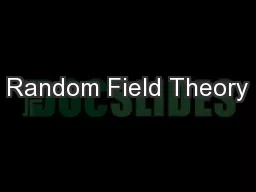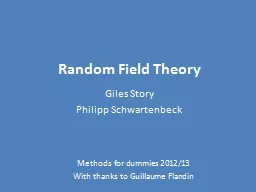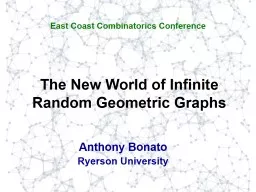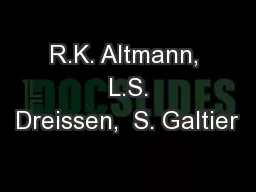PPT-A sharp threshold for Ramsey properties of random sets of i
Author : karlyn-bohler | Published Date : 2015-12-01
A Socratic dialogue Ehud Friedgut Weizmann Institute Joint work with Hiệp Hàn Yuri Person and Mathias Schacht Hello Im Socrates Im 2483 years old And I thought
Presentation Embed Code
Download Presentation
Download Presentation The PPT/PDF document "A sharp threshold for Ramsey properties ..." is the property of its rightful owner. Permission is granted to download and print the materials on this website for personal, non-commercial use only, and to display it on your personal computer provided you do not modify the materials and that you retain all copyright notices contained in the materials. By downloading content from our website, you accept the terms of this agreement.
A sharp threshold for Ramsey properties of random sets of i: Transcript
Download Rules Of Document
"A sharp threshold for Ramsey properties of random sets of i"The content belongs to its owner. You may download and print it for personal use, without modification, and keep all copyright notices. By downloading, you agree to these terms.
Related Documents














![SHARP Restructure [Insert Briefer’s Name]](https://thumbs.docslides.com/1044343/sharp-restructure-insert-briefer-s-name.jpg)